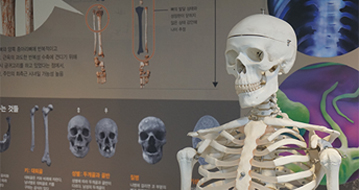Forewords
The spine surgery develops and increases rapidly. Numerous instruments and techniques are developed and introduced to us. Some surgery of the spine continues to evolve but some spine operations become outdated within a short time. Nowadays evidence-based spine surgery becomes important to patients as well as spine surgeons.
The Korean Spinal Neurosurgery Society has published the first Korean Textbook of Spine in October 2008. In addition to the first textbook of spine, the first atlas textbook of spine was suggested to publish by Prof. Ho-Yeol Zhang and some members at the commemoration meeting of publishing first textbook of spine. I am aware that it is not easy to publish a comprehensive collection of spinal operative procedures in a short period. We accomplished publishing the first atlas of spine ultimately.
I think that this first atlas of spine is not perfect. But it seems obvious that this textbook of atlas of spine surgery is very helpful to medical students, residents and young spine surgeons. I hope that the spine surgeons will give the patients good qualified services without failed back surgery syndrome through the first atlas of spine.
I would like to congratulate all members of KSNS, who contribute directly or indirectly to publishing our first atlas. Especially I would like to extend my thanks to the 122 authors of atlas, without whose contributions this atlas would not have been possible.
Sep. 9. 2010
Whan Eoh, M.D., Ph.D.
13th President of Korean Spinal Neurosurgery Society
Professor, Department of Neurosurgery
Samsung Medical Center
Sungkyunkwan University School of Medicine
Seoul, Korea
Iam grateful that the Surgical Atlas of Spine, which has been started in the last President, Prof. Whan Eoh? term, could be published at the end of my own term.
I thank the passionate work of Dr. Ho Yeol Zhang and the doctors of the Textbook Editorial Committee. I am grateful to Medart company for producing precise and realistic anatomic illustrations, and the personnels of Koonja Publishing Inc. for publishing this book. I also truly thank the many leading spine surgeons of Korea for participating as authors in this book.
This book has incorporated all the methods of spinal surgeries developed until now and also included the basics of anatomy, the usage of recent medical instruments and the various types of minimally invasive spinal surgery.
The purpose of this Surgical Atlas of Spine is to provide a guideline for the surgery in a succinct way so that residents can know their surgeries before operating, and to the expert spine surgeons, this book is to give them a chance to learn more surgical tips and know-how? on important points of a surgery and ultimately to make the surgery more safe and closer to perfectness leading up to a better recovery in the patient.
The important anatomies that must be noted before operation were introduced first, and then the surgery steps were explained with as much as illustrations possible in order to allow the readers to understand the steps as simply as possible.
I look forward to this book becoming the most useful book for all spine surgeons.
Sep. 9. 2010
Seung-Chul Rhim, M.D., Ph.D.
13th president of Korean Spinal Neurosurgery Society
Professor of Neurosurgery
Asan Medical Center,
University of Ulsan College of Medicine
Preface
This Surgical Atlas of Spine is focused on the all kinds of spine operations. The authors, all experts in their respective areas, have been given specific instructions to examine the nuances of surgical technique. As such, there should be useful information within these chapters for practitioners at all levels.
Great care has been taken to organize the chapters in an intuitive and logical sequence and the best possible sequence, used in the book, is as the following. The chapters were first divided by anatomical regions, then each region divided once again in to surgical approach, instrumentation and minimally invasive surgeries to let the readers easily find the surgical method for the specific parts they are looking for.
The illustrations of this book are the works of the company, Medart. This company has drawn these anatomical illustrations observing the cadavers directly at the Department of Anatomy in Yonsei University College of Medicine, and through this, successfully produced elaborate illustrations, enhancing the overall value of this book.
This book contains everything from the basic anatomical knowledge a spine surgeon should have, all the way to every surgical techniques, both classic and modern.
I truly hope that this book shall help the spine surgeons with all kinds of surgeries. Now, let me extend about why we call maps an atlas, plus why we also call the first vertebra of the spine an atlas.
Why is it called an Atlas?
Mankind, from the ancient times, drew maps of various methods while living on this planet. Out of those maps, we usually call a collection of maps as an atlas.
The origin of the word, Atlas, dates back to 1569 to a person named Heradus Mercator, who drew maps using the Mercator? projection.
Mercator started to make the world map using his projection, however the process was highly time-consuming and it was only the year after he had died when the world map was finally finished by his son, Rumold Mercator. Rumold Mercator, following his father? will, published the world map with a picture of Atlas, the Greek titan.
According to the Greek mythology, when Zeus banished his father, Cronos, a race of giant gods, called the Titans, stood along with Cronos, against Zeus, and fought Zeus with all their might. However, Zeus won in the end, resulting in all the Titans imprisoned forever in hell. At this period, Zeus punished Atlas, the king of the Titans, for disturbing the heavens by making him carry the heavens on his shoulders.
The Greeks of that time thought that Atlas was facing the Strait of Gibraltar at the west end of the Mediterranean, which was considered by them as the end of the world. The Atlas Mountains of northern Africa are said to be this giant transformed, and that the ocean on the west side of the Gibraltar Strait as the Atlantic Ocean.
Starting from Rumold Mercator, it has become a trend to incorporate Atlas in to world geography, and soon map collections started being called atlases.
As this practice was extended, illustrations and anatomical picture books, studied at medical schools, were also called an atlas. This was because, anatomy is just like geography in the sense that one must find his way to a region in the human body, and therefore anatomical illustrations were just like maps to the human geography.
In addition to this, we also call the first vertebra of the spine an atlas. The reason is that the first cervical spine is holding the cranium, which takes the shape of a sphere just like the heavens or Earth.
I anticipate that the readers who are majoring in spinal surgery will take more interest in studying about the spine through knowing how the word ?tlas?has been derived from Greek mythology.
Sep. 9. 2010
Ho Yeol Zhang, M.D., Ph.D.
Chief Editor, Textbook Editorial Committee
Clinical Professor of Neurosurgery
National Health Insurance Corporation Ilsan Hospital
Yonsei University College of Medicine






























